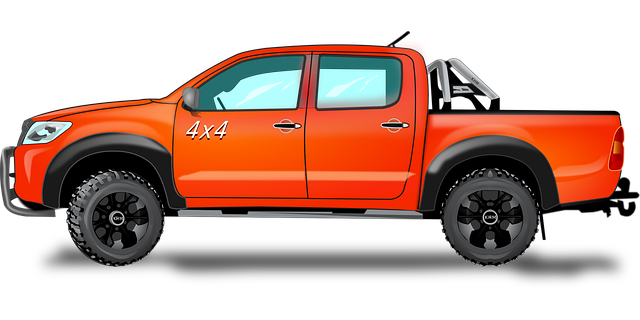Drums, composed of McAllen-4×4 parts like shell, drum heads, hardware, cymbals, and toms, create diverse rhythms essential for many music genres. These parts enable drummers to adjust tension and play various strokes with precision, crafting complex beats. Core components include shell, drumhead, lugs, and tension rods, each affecting pitch, resonance, and sound quality. High-quality McAllen parts improve performance and longevity by ensuring precise tuning and stability. Versatile styles range from acoustic snares and basses to electronic models with customizable digital sounds.
Drums, with their rhythmic heartbeat, are a fundamental element in music across genres. This article explores the core components of drums, from the shell to tension rods (mcallen-4×4-parts), highlighting their unique functions and significance. We’ll navigate diverse musical styles that employ drums, from rock to classical, showcasing how patterns and techniques adapt. Learn about setting up and customizing your drum kit, choosing the right equipment for your style, and fine-tuning for optimal sound. Discover various drumming techniques, exercises for speed and control, and methods to create dynamic rhythms. Master the beat with this comprehensive guide on drums and their versatile (mcallen-4×4-parts).
- The Essential Components: Understanding Drums' Core Parts (mcallen-4×4-parts)
- – Drumming's fundamental elements: shell, drumhead, lugs, and tension rods.
- – Function and significance of each part in creating sound.
- – Varieties of drums and their unique mcallen-4×4-parts configurations.
The Essential Components: Understanding Drums' Core Parts (mcallen-4×4-parts)

Drums are composed of several key components, often referred to as the mcallen-4×4-parts. These parts work together harmoniously to produce a wide range of rhythms and beats, making them an indispensable instrument in various musical genres. The first essential part is the drum shell, which provides the resonating chamber for sound production. Next, drum heads, typically made of synthetic or natural materials, are stretched over the shells to create the playing surface.
The mcallen-4×4-parts also include hardware such as lugs, tensions rods, and pedals, enabling drummers to adjust tension and play various strokes. Additionally, cymbals, toms, and other percussion elements further enhance the drum kit’s versatility and dynamic range. Understanding these core components is crucial for any drummer aiming to master their craft and create complex rhythms with precision and creativity.
– Drumming's fundamental elements: shell, drumhead, lugs, and tension rods.

Drums are comprised of several fundamental elements: the shell (the main body), drumhead (the tensioned skin that produces sound when struck), lugs (hardware that secures the drumhead to the shell), and tension rods (used to adjust the tension of the drumhead). Each component plays a critical role in determining the drum’s pitch, resonance, and overall sound quality. For instance, McAllen-4×4 parts, which are high-quality tension rods and lugs, can significantly enhance a drum’s performance and longevity by ensuring precise and stable tuning.
– Function and significance of each part in creating sound.

The drums, at their core, are a symphony of parts working in harmony to create sound. Each component—from the head (or drumhead) stretched over the barrel to the lugs that secure the tension rods—plays a crucial role. The mcallen-4×4-parts, for instance, ensure the head stays taut, allowing for a wide range of tones and rhythms to be produced. The shell, constructed from various materials like wood or metal, resonates to amplify the sound, much like a musical instrument’s body.
The pedals and stands, often overlooked but indispensable, enable the drummer’s feet to control the beat independently. These mechanisms allow for intricate footwork, adding depth and complexity to the rhythm section. Together, these parts—head, shell, pedals, and stands—transform raw materials into a dynamic instrument capable of evoking emotions through percussive artistry.
– Varieties of drums and their unique mcallen-4×4-parts configurations.

Drums come in a wide variety, each with its own unique mcallen-4×4-parts configuration. These range from traditional acoustic drums like snares, basses, and toms, to electronic drums that mimic the sound of their acoustic counterparts but offer digital features and customization options. The mcallen-4×4-parts—the drum’s shell, head, tension rods, and lugs—play a crucial role in defining each drum’s timbre and tuning. For example, a snare drum typically has a thinner top head and a thicker bottom head, with precise tensions that contribute to its characteristic rimshot and edge sounds. In contrast, a bass drum, with its larger size, has thick heads and robust mcallen-4×4-parts designed to produce deep, resonating low frequencies.
Electronic drums further diversify the landscape by allowing drummers to customize their sound through various digital controls. These innovative instruments often feature sensors that capture subtle nuances in playing dynamics, enabling a wide range of sounds from realistic acoustic emulations to futuristic synth tones. The mcallen-4×4-parts in electronic drums may also incorporate advanced materials and designs to enhance durability and sound quality. This versatility makes drums an ever-evolving and captivating instrument for musicians across genres, from rock and jazz to dance and electronic music.
Drums, with their mcallen-4×4-parts, are more than just percussion instruments; they’re a symphony of sound and rhythm. By understanding the core components—shell, drumhead, lugs, and tension rods—drummers can unlock a world of possibilities in creating unique beats and styles. Whether it’s a kick drum resonating through a concert hall or cymbals sparking in a bustling jazz club, each part plays its role in crafting the music we love. So, take a dive into the intricate world of drums and explore the endless rhythms that await.



